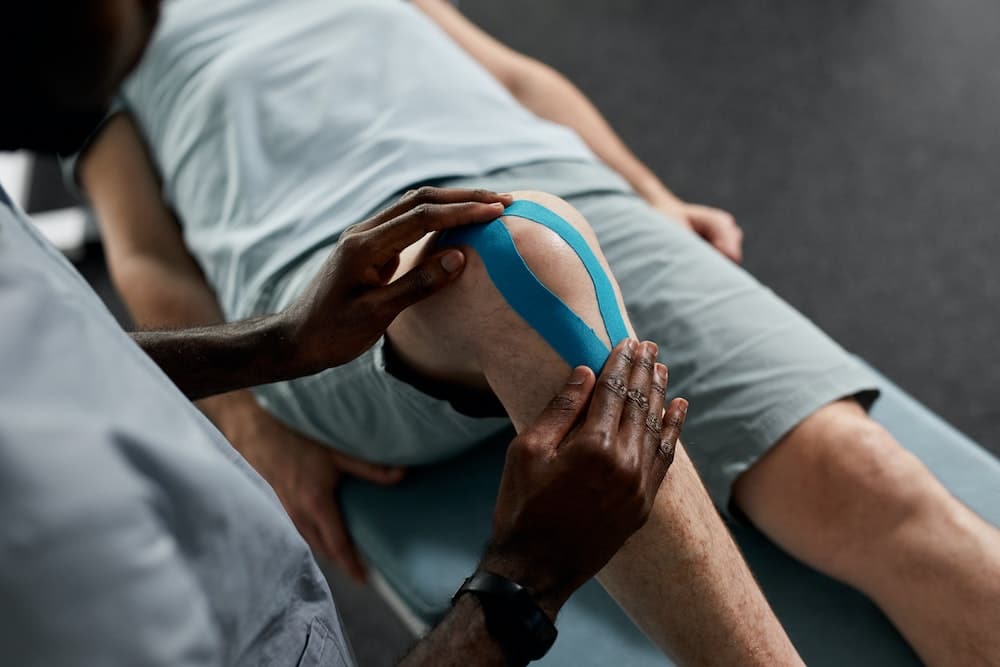What Are the Developments in AI-Assisted Rehabilitation Robotics for Stroke Survivors?

It’s an era defined by the rapid advancement of technology. From self-driving cars to AI-powered assistants in our homes, we have witnessed extraordinary developments in the field of technology. However, the potential of these advancements extends beyond convenience and entertainment. One area where technology, specifically robotics and AI, is making a remarkable impact is rehabilitation, particularly for stroke survivors. Stroke rehabilitation is a crucial process that helps survivors regain independence and improve their quality of life. The introduction of AI-assisted robotic systems is revolutionizing this process, offering promising prospects for improved outcomes.
Robotics in Stroke Rehabilitation
Stroke survivors often experience debilitating effects, such as partial paralysis, that significantly impair their functional abilities. Rehabilitation has traditionally involved physical, occupational, and speech therapy. However, the advent of robotics has revolutionized this process.
Lire également : What will you find in the black mystery box? discover now!
Robotic rehabilitation systems can provide high-intensity, repetitive, task-specific, and interactive treatment to stroke patients. These factors are critical to promoting neural plasticity and functional recovery. Robotic systems can assist in upper limb therapy, helping patients regain control over their arm and hand movements.
AI-powered robotic devices can deliver precision therapy, adapting to the patient’s progress. They can also provide real-time feedback, helping therapists adjust the training regimen accordingly. Let’s delve deeper into the developments in this area.
Sujet a lire : How Are Microbial Sensors Being Used to Detect Contaminants in Drinking Water?
AI-Assisted Rehabilitation Robots
Artificial Intelligence (AI) is a transformative technology that has permeated various sectors, including healthcare and rehabilitation. AI has the potential to monitor patient progress, adapt therapeutic strategies, and predict outcomes in stroke rehabilitation.
AI-assisted rehabilitation robots can monitor the performance of stroke survivors, providing valuable data such as the range of motion, strength, and coordination. This information can be used to adjust therapy, making it more personalized and effective.
Moreover, AI can predict patient outcomes based on their initial condition and progress. This predictive capability can help therapists devise optimal rehabilitation strategies, enhancing the effectiveness of therapy.
Therapeutic Application of Robotic Systems
Robotic systems have been utilized in various therapeutic applications for stroke rehabilitation. The primary areas include upper limb therapy, lower limb therapy, and hand therapy.
Robotic systems can assist stroke survivors in performing repetitive tasks, which is crucial for improving limb function. For example, they can help patients perform various movements, such as reaching and grasping, which can enhance arm and hand function.
Robot-assisted gait training is another significant application of these systems. Robots can provide body weight support and guide the leg movements of patients, helping them regain their walking ability.
Impact on Patients and Therapists
The advent of AI-assisted rehabilitation robots holds significant implications for both stroke survivors and therapists. For patients, these systems offer a more personalized, intensive, and interactive form of therapy. This can result in improved functional outcomes and a better quality of life.
For therapists, AI-assisted robots provide an efficient and effective tool for delivering therapy. They can leverage the data provided by these systems to adjust therapy, improve patient engagement, and enhance outcomes. Moreover, the predictive capabilities of AI can enable therapists to devise optimal strategies, making rehabilitation more effective.
Future Prospects of AI-Assisted Rehabilitation Robotics
The field of AI-assisted rehabilitation robotics is still in its seminal stages, and there is much room for growth and innovation. Future developments could include the integration of virtual reality (VR) with robotic systems, creating a more immersive and engaging therapeutic experience.
Moreover, advancements in AI algorithms could enhance the predictive capabilities of these systems. This could enable therapists to identify potential hurdles in a patient’s recovery process and devise strategies to overcome them.
Furthermore, with the advancements in wearable technology, we could witness the development of wearable robotic devices. These could offer stroke survivors the opportunity to continue their rehabilitation at home, under the supervision of therapists via tele-rehabilitation systems.
As technology continues to evolve, the possibilities for AI-assisted rehabilitation robotics are limitless. It’s a promising field that holds the potential to transform the lives of stroke survivors, offering them hope for a better and more independent future.
Research and Evidence on AI-Assisted Rehabilitation Robotics
A growing body of research supports the use of AI-assisted rehabilitation robots in stroke recovery. Various studies available on PubMed crossref, Google Scholar, and other scientific databases highlight the potential benefits of this technology.
One systematic review published in a free article on PMC examined the efficacy of robot-assisted therapy (RAT) in improving the upper extremity function of stroke patients. The study found that RAT provides a significant advantage over conventional therapy, particularly in improving strength and motor control.
In another study, researchers used an AI-powered rehabilitation robot to deliver hand rehabilitation therapy to stroke patients. They reported that the robot-assisted therapy resulted in notable improvements in hand function, underlining the potential of this technology in enhancing recovery outcomes.
Furthermore, a study on Google Scholar crossref investigated the predictive capabilities of AI in stroke rehabilitation. The findings suggest that AI algorithms can accurately predict patient outcomes based on initial condition and progress, providing therapists with valuable insights for devising optimal therapeutic strategies.
Despite these promising results, it’s important to note that more research is needed to fully understand the potential benefits and limitations of AI-assisted rehabilitation robotics. However, the existing evidence certainly suggests that this technology holds promise for transforming stroke rehabilitation.
Conclusion: The Transformative Potential of AI-Assisted Rehabilitation Robotics
The advent of AI-assisted rehabilitation robotics has opened up a new frontier in stroke rehabilitation. By providing high-intensity, repetitive, task-specific, and interactive treatment, these technologies have the potential to significantly enhance recovery outcomes and improve the quality of life for stroke survivors.
The research available on databases such as PubMed crossref, Google Scholar, and other scientific platforms provides strong evidence for the efficacy of this technology. As highlighted by the systematic review and other studies, robot-assisted therapy can result in notable improvements in upper limb function and hand control, thereby helping stroke patients regain their independence.
Moreover, the predictive capabilities of AI provide therapists with valuable insights for devising optimal therapeutic strategies. This can enhance the effectiveness of rehabilitation and improve patient engagement.
However, it’s important to view these developments in the context of ongoing research and innovation. Future advancements in AI algorithms, virtual reality integration, and wearable technology have the potential to further revolutionize the field of stroke rehabilitation.
In conclusion, AI-assisted rehabilitation robotics represents a paradigm shift in stroke rehabilitation. This technology has the potential to transform the lives of stroke survivors, offering them hope for a better and more independent future. It’s a promising field that holds vast potential for growth, innovation, and impact. As technology continues to evolve, the possibilities for AI-assisted rehabilitation robotics are limitless.
